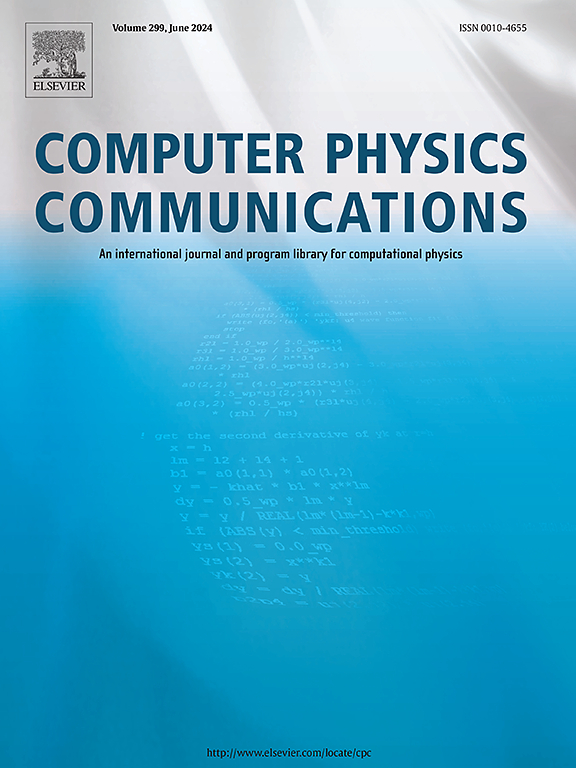Perfectly Matched Layers implementation for E-H fields and complex wave envelope propagation in the Smilei PIC code
IF 3.4
2区 物理与天体物理
Q1 COMPUTER SCIENCE, INTERDISCIPLINARY APPLICATIONS
引用次数: 0
Abstract
The design of absorbing boundary conditions (ABC) in a numerical simulation is a challenging task. In the best cases, spurious reflections remain for some angles of incidence or at certain wavelengths. In the worst, ABC are not even possible for the set of equations and/or numerical schemes used in the simulation and reflections can not be avoided at all. Perfectly Matched Layers (PML) are layers of absorbing medium which can be added at the simulation edges in order to significantly damp both outgoing and reflected waves, thus effectively playing the role of an ABC. They are able to absorb waves and prevent reflections for all angles and frequencies at a modest computational cost. They increase the simulation accuracy and negate the need of oversizing the simulation usually imposed by ABC which normally leads to a waste of computational resources and power. In this paper, a uniform derivation of PML for finite-difference time-domain (FDTD) schemes and various geometries in Particle-In-Cell (PIC) codes is presented for Maxwell's equations and, for the first time, extended to the full envelope wave equation. An implementation of these methods in the open source PIC code Smilei is proposed and benchmarked.
完美匹配层实现的E-H场和复杂的波包络传播在Smilei PIC代码
数值模拟中吸收边界条件的设计是一项具有挑战性的工作。在最好的情况下,在某些入射角或某些波长处,伪反射仍然存在。在最坏的情况下,ABC甚至不可能用于模拟中使用的一组方程和/或数值方案,并且反射根本无法避免。完美匹配层(PML)是一种吸收介质层,可以在模拟边缘添加吸收介质层,以显著地阻尼出射波和反射波,从而有效地发挥ABC的作用。它们能够以适度的计算成本吸收波并防止所有角度和频率的反射。它们提高了仿真精度,并消除了ABC通常施加的超大规模仿真的需要,而这通常会导致计算资源和功率的浪费。本文给出了麦克斯韦方程组有限差分时域(FDTD)格式和各种几何形状的PML的统一推导,并首次推广到全包络波方程。在开放源代码的PIC代码Smilei中提出了这些方法的实现并进行了基准测试。
本文章由计算机程序翻译,如有差异,请以英文原文为准。
求助全文
约1分钟内获得全文
求助全文
来源期刊

Computer Physics Communications
物理-计算机:跨学科应用
CiteScore
12.10
自引率
3.20%
发文量
287
审稿时长
5.3 months
期刊介绍:
The focus of CPC is on contemporary computational methods and techniques and their implementation, the effectiveness of which will normally be evidenced by the author(s) within the context of a substantive problem in physics. Within this setting CPC publishes two types of paper.
Computer Programs in Physics (CPiP)
These papers describe significant computer programs to be archived in the CPC Program Library which is held in the Mendeley Data repository. The submitted software must be covered by an approved open source licence. Papers and associated computer programs that address a problem of contemporary interest in physics that cannot be solved by current software are particularly encouraged.
Computational Physics Papers (CP)
These are research papers in, but are not limited to, the following themes across computational physics and related disciplines.
mathematical and numerical methods and algorithms;
computational models including those associated with the design, control and analysis of experiments; and
algebraic computation.
Each will normally include software implementation and performance details. The software implementation should, ideally, be available via GitHub, Zenodo or an institutional repository.In addition, research papers on the impact of advanced computer architecture and special purpose computers on computing in the physical sciences and software topics related to, and of importance in, the physical sciences may be considered.
 求助内容:
求助内容: 应助结果提醒方式:
应助结果提醒方式:


